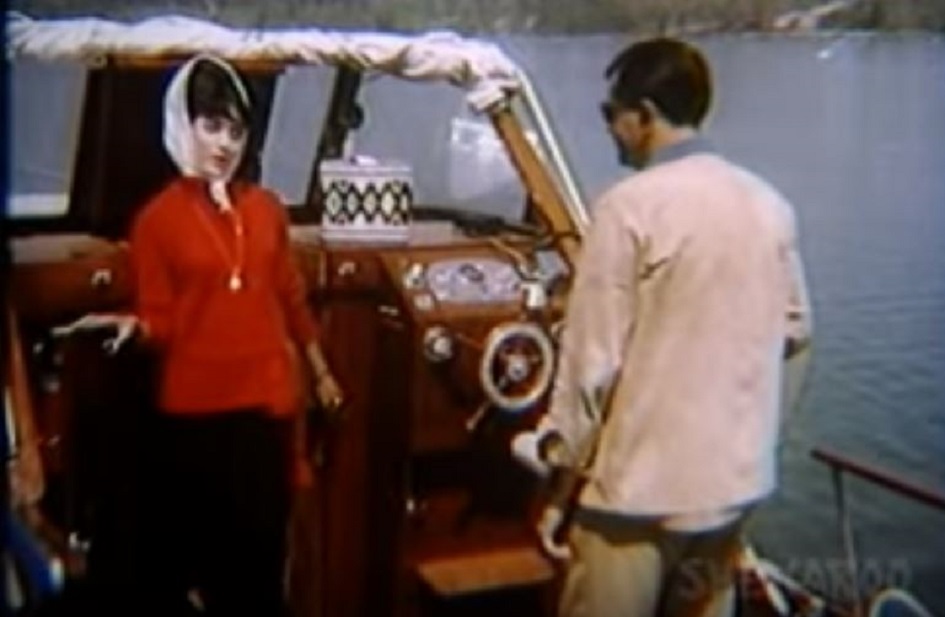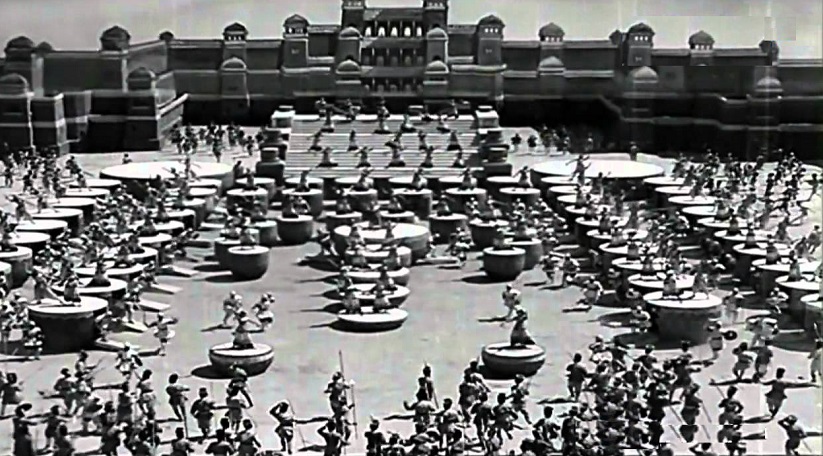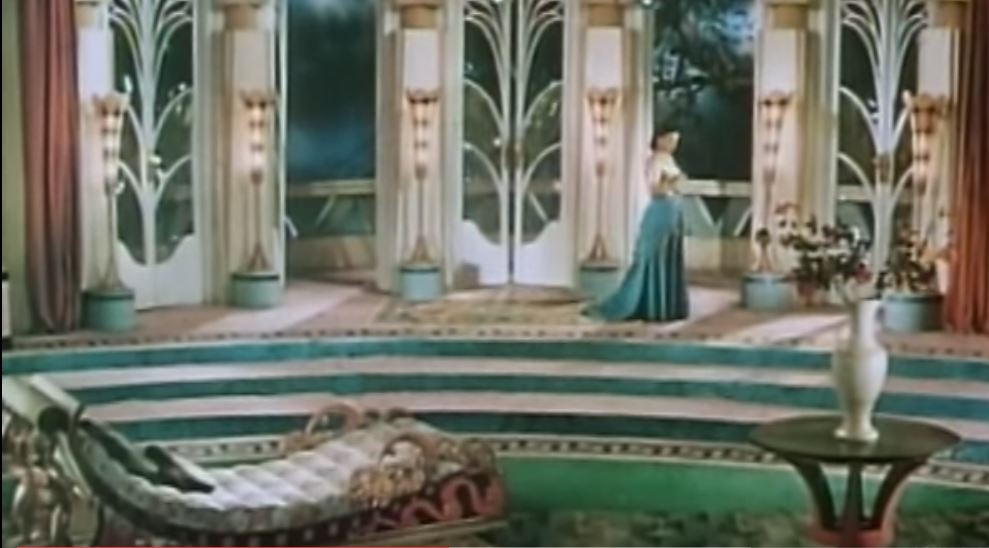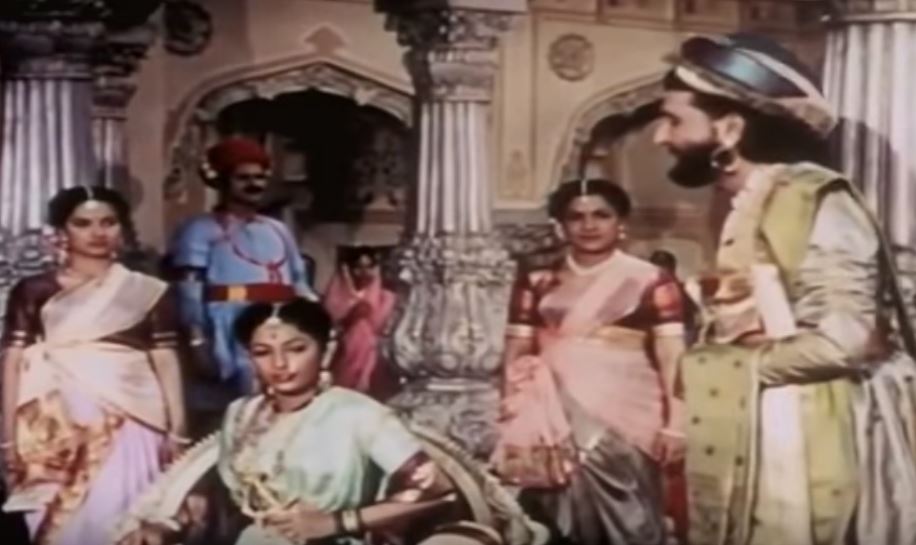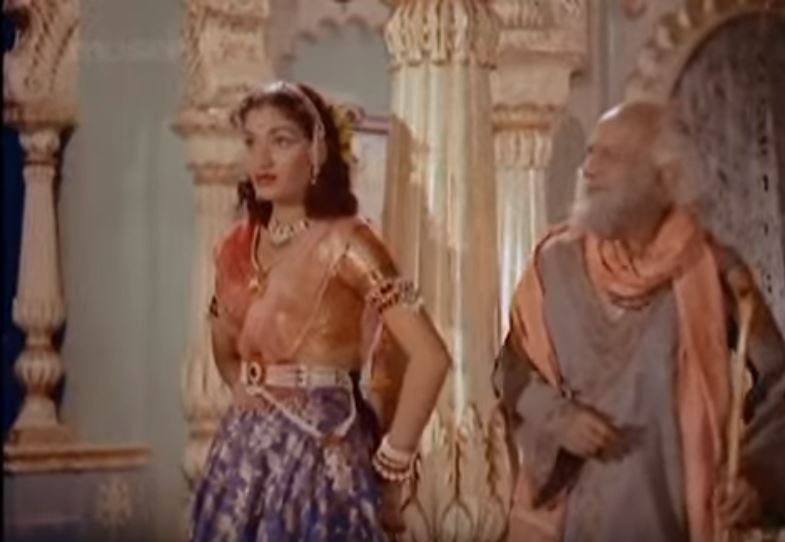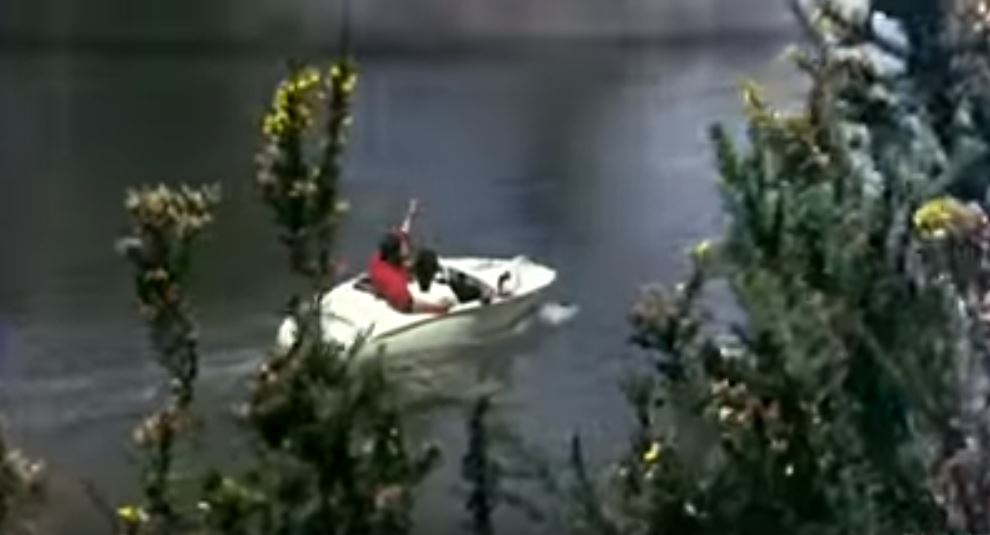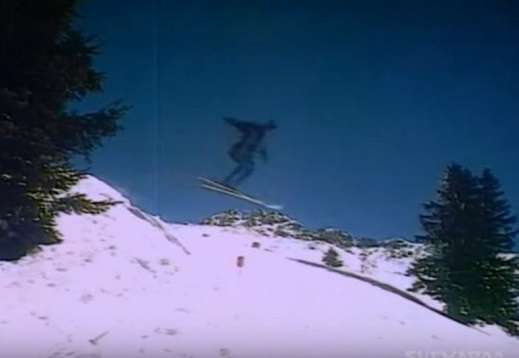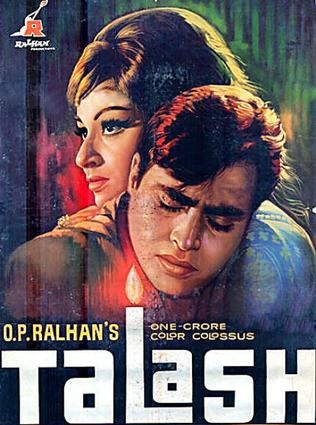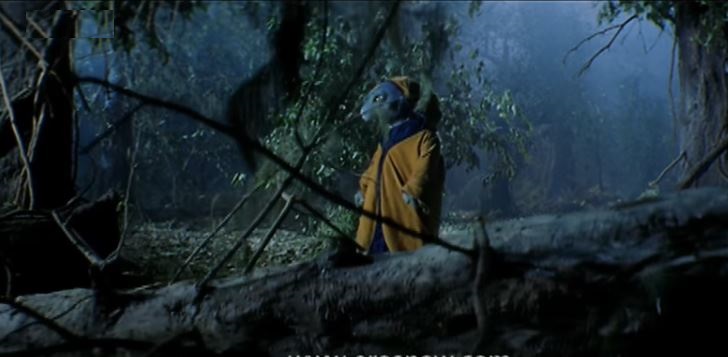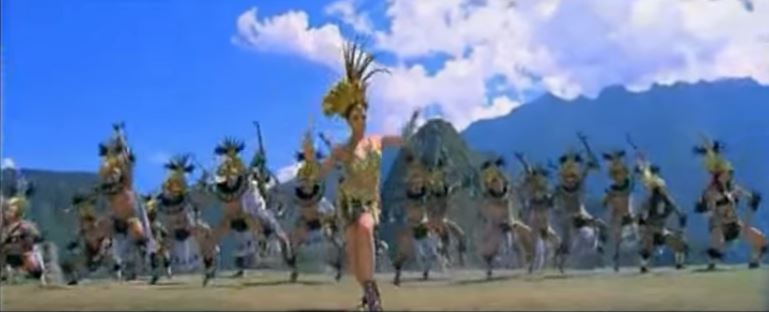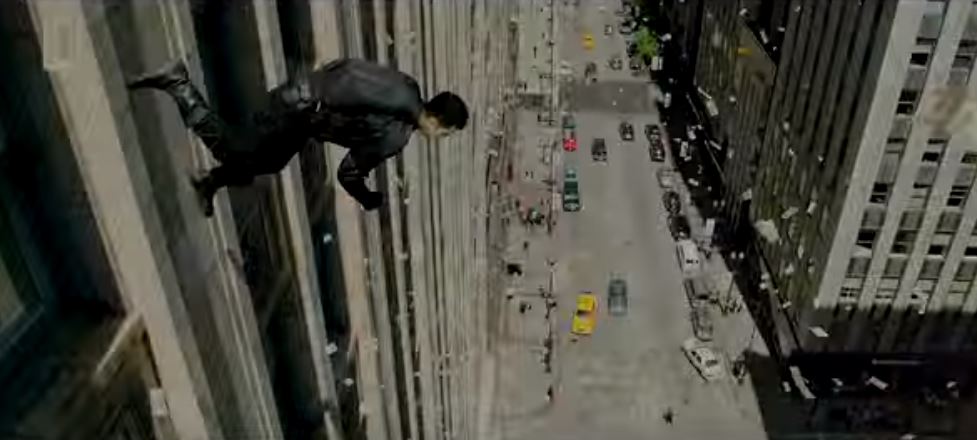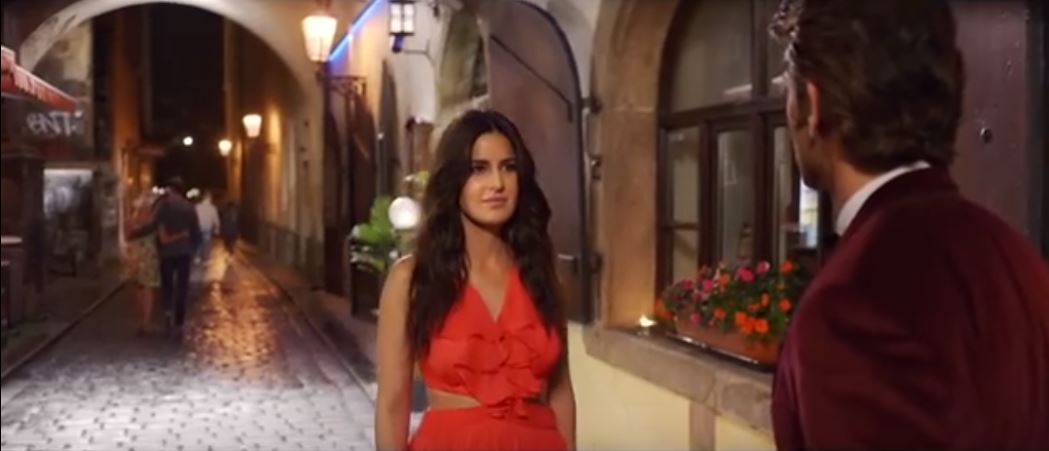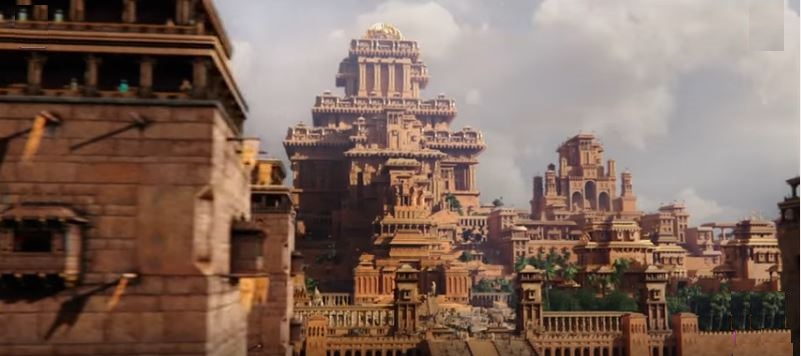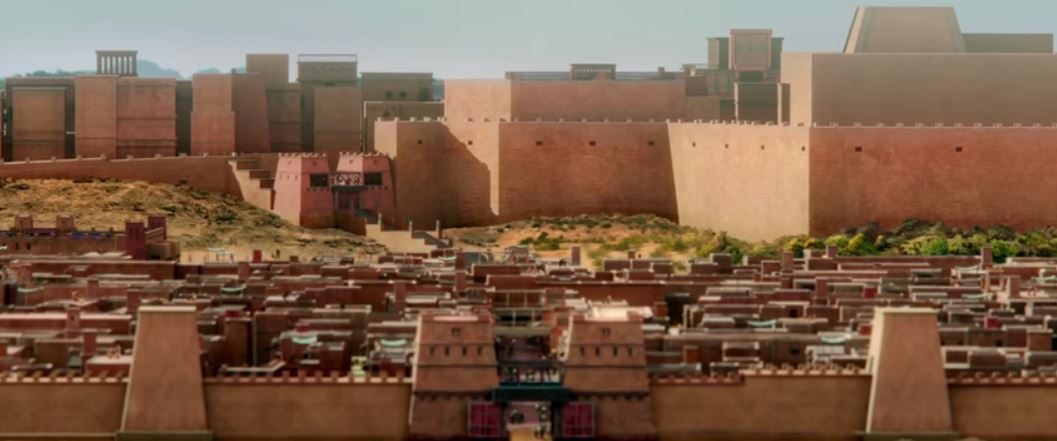The most expensive Hindi-Urdu films
(→The most expensive films) |
(→1967) |
||
| Line 115: | Line 115: | ||
===1967=== | ===1967=== | ||
'''Around The World''' | '''Around The World''' | ||
| − | [[File: Around The World | + | [[File: Around The World sking1.jpg| '' Around the World '' had outdoor photography of a kind never seen in an Indian film before, including a very long ski chase down the Swiss Alps.|frame|500px]] |
Box office rank that year: 11. | Box office rank that year: 11. | ||
Revision as of 22:51, 13 May 2017
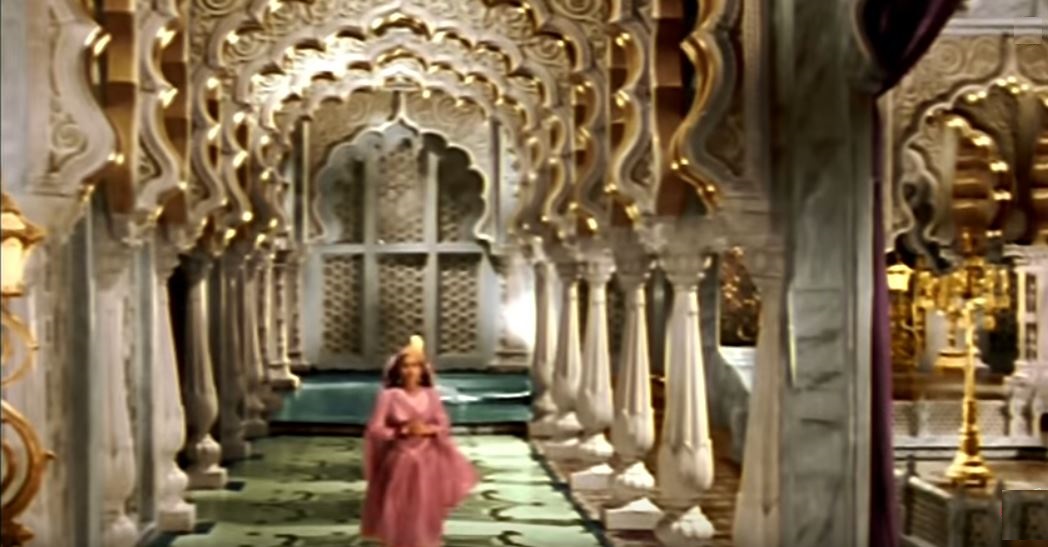
This is a collection of articles archived for the excellence of their content. |
Contents |
The most expensive films
Note of caution: Some middle-aged people (including some actresses) have three sets of ages: their true age, the age they pretend to be and an age higher than the actual (in order to claim senior citizen benefits). Please see Private lives of Indian (Mumbai) stars for the ages claimed by Rekha and Dimple Kapadia when they joined the films.
Before the courts Smt. Dimple Kapadia must have claimed an age higher than the one given to the media. If she did not do so then how was her marriage to Mr Khanna legal? Under the law it would have been a child marriage and thus null and void.
Similarly, most Hindi-Urdu films have three budgets: the actual budget, the figure ‘leaked’ to the media, and the much lower figure given to the tax authorities.
1913 to 2009
In every year there are a few films with budgets that are somewhat bigger than those of the other films of that year. However,from Raja Harischandra (1913) to 2009, once in every five or ten or fifteen years there used to be one spectacle-filled film with a budget very considerably higher than the norm till then: a budget that would not be equalled in the next five or ten years. Mughal-e-Azam (1960) was followed by Sholay (1975). Sangam (1964), too, was a ‘big-budget’ but actual cash investment was not that high because, being the film’s producer, the director and leading man did not have to be paid in advance.
Hindi-Urdu audiences had eagerly waited for years for Around the World (1967) and Mera Naam Joker (1970), both many years in the making, to be released. Both had bigger budgets than Mughal-e-Azam, even after accounting for inflation. ‘Spectaculars’ normally are box-office blockbusters. It was not so with these two films. ATW at least reached the no.11 spot in the box office rankings of that year, meaning that it was an above average earner, though not as big as its huge budget warranted. Joker could not find a place in the Top 23 films of its year; statistics are not available for below that rank.
After 2010
Koi Mil Gaya (2003) and Endhiran (Robot) (2010) set the current mega-budget trend. Both films used expensive, computer-generated images. Even after adjusting for inflation, the budgets of the mega-budget films released after 2010 have reached new heights. (The cash invested in Koi Mil Gaya was less than in Robot, because the director and leading man of KMG were in-house.)
Rs.1 crore in 1970 (Talash, Prem Pujari, Mera Naam Joker) are equal to roughly Rs.55 crore in 2015. However, each part of Bahubali cost around Rs.125 crore, and many Hindi-Urdu films made after 2010 around Rs.115 crore each.
Such a huge jump in budgets has become possible because
i) multiplex ticket prices (say, Rs.350 in Delhi) in 2015 were slightly higher than in the 1960s and ’70s (Rs.6.50 in 1980);
ii) the population has almost doubled, and
iii) so has the size of the middle-class as a percentage of the country’s population.
iv) Dubbing has enabled Hindi-Urdu films to reach the Tamil hinterland (assuming that the two Telugu states, called ‘Nizam’ by film distributors, have always been fairly conversant with Hindi-Urdu) . Conversely, the Tamil Endhiran (Robot), which set the big budget trend, earned almost Rs.20 crore, and the Telugu Bahubali (Part 1 alone) around Rs.120 crore from their Hindi-Urdu versions.
v) The overseas market now accounts for around a quarter??? of the total revenues of commercial as well as ‘multiplex’ (formerly called ‘art’) films. Dhoom 3 was seen in Imax in 23? countries; as with Bahubali, many of these overseas audiences were not of Indian-Pakistani origin.
Therefore, since 2010 the wait for the next record budget has got reduced to a year, sometimes less.
Mega-budget films before 2010
1948
Chandralekha
Box office rank that year: 2.
The money was spent on spectacle, including a famous drum dance. Epic lengths normally hike up the cost of costume dramas (unless costumes and sets are repeated or prolonged). At 3hrs 27 mts/ 207 minutes, Chandralekha is the 22nd longest Hindi-Urdu film ever.
1951
Aan
Box office rank that year: 1.
The money was spent on Kodak negative, Technicolor print, lavish sets and costumes. Dilip Kumar would not have been very expensive then.
195?
Jhansi ki Rani
Box office rank that year: Not in the top ten. A flop.
The money was spent on colour negative, Technicolor print, lavish sets and costumes, war scenes and an English version. The film had no stars other than the heroine.
1955
Jhanak Jhanak Payal Baje
Box office rank that year: 3.
The money was spent on coulur negative, Technicolor print, lavish sets and costumes. The film had no stars.
1957
Mother India
Box office rank that year: 1.
The money was spent on Gevacolour negative, Technicolor print, setting up avillage to recreate poverty and the film’s epic length ?. There was a huge starcast headed by the reigning no.1, Nargis. The three leadng men and the two other leading ladies were not very big stars then.
1960
Box office rank that year: 1.
The money was spent on everything. Recreating Mughal palaces, especially the sheesh mahal (hall of mirrors) and the peacock throne, is infinitely more expensive than depicting poverty (which does not come free either); a substantial Technicolor portion; war scenes; Dilip Kumar was the highest paid star of the era, music director Naushad? the highest paid music director; and Madhubala was at the peak of her career. (LIFE magazine felt that Madhubala, actress was the world's biggest star at the time. This link will take you to the original LIFE article.)
The film had an epic length (3 hours, 11 minues); and obscene payments were made to artistes like the legendary Bade Ghulam Ali Khan? (see Binaca Geet Mala 1960: greatest hits).
Director K. Asif paid the classical maestro Ustad Bade Ghulam Ali Khan Rs25,000 per song to sing ‘Prem jogan ban-ke’ and ‘Shubh din aayo raj dulara’, for his magnum opus Mughal-e-Azam at a time when ‘reigning playback singers like Lata Mangeshkar and Mohammed Rafi got less than Rs500 per song.’
As a result of extravagances like these the film’s costs exceeded its planned budget wildly, delaying its production and release by several years. Shapoorji Pallonji’s investment arm, Sterling, stepped in, acquired the film's rights, and got it completed. (Because they, and not some techno-myopic film producer owner the rights, the Pallonji family got the film colorised in 2004 and made into a stage musical in 2017.)
As could have been predicted in advance, Prem Jogan and Shubh din turned out to be the film’s least popular, least commercially successful songs. Asif could not care less.
For connoisseurs ‘Prem jogan ban-ke’ and ‘Shubh din aayo raj dulara’ are regarded as high points in the history of Indian film music.
191 mts/ 3hrs 11 mts (The colorised version is shorter)
1964
Sangam
Box office rank that year: 1.
The money was spent on Technicolor; shooting in Paris and Switzerland (Sangam was the first Indian film shot abroad); Rajendra Kumar was a ‘jubilee star’ by then, though he would not have overtaken Dilip Kumar when he was signed; and a German-English song was sung by a European singer (hiring Western talent was also a first for India). At 231 minutes (3hours, 51 minutes) Sangam was the first Indian film with two Intervals (an idea popularised by epics like The Ten Commandments) and the fourth longest Hindi-Urdu film ever made.
1965
Waqt
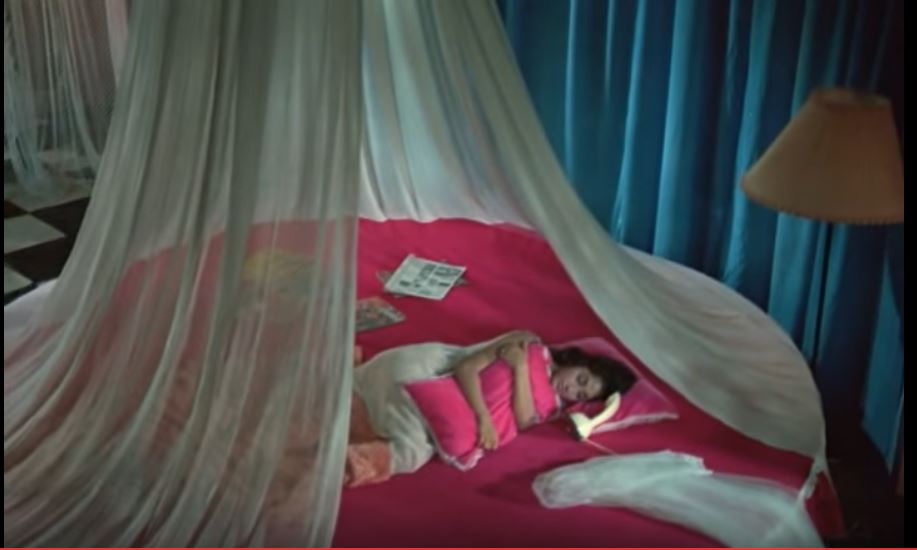
The rich have periodically been with us {since at least Kaagaz ke Phool (1959)}. However, with circular beds, telephones with circular bases, and fancy cars, Waqt was one of the first Indian films to unapologetically celebrate the lives of India’s modern (as opposed to feudal) upper class.
Box office rank that year: 1.
The money was spent on a huge star cast: it had three leading men and two leading ladies. Sadhana, actress might possibly have been the no.1 star of the time; the others were important but not megastars At 3hrs and 26 mts Waqt is the 23rd longest Hindi-Urdu film ever.
1967
Around The World
Box office rank that year: 11.
The money was spent on 70mm and stereophonic sound (for four prints), Technicolor; shooting in many countries; the ship sequence, the skiing sequence and the aeroplane take off were firsts for India; Raj Kapoor would have been very expensive when signed; this was the first Indian film to use a 150-piece orchestra for one of its songs (the title track); the film featured the world’s greatest (West Indian) cricket players of its era.
1969
In the late 1960s three films were launched with budgets that, for the first time in Indian history, reportedly exceeded Rs. 1 crore: Mera Naam Joker, Prem Pujari and Talash. All three had leading men past their prime (though Dev Anand would begin a second innings very soon thereafter) and all three films flopped. The Rs. 1 crore figure was so unprecedented in those days that Talash billed itself in all its advertising as the ‘one crore color colossus.’ The ‘colour’ bit was for alliteration because by 1966 all films in the Top 10 had been in colour.
Talash
Box office rank that year: 15, i.e. just below average.
The money was spent on ??? (goodness knows what). However, Rajendra Kumar was reportedly charging Rs.17 lakh per film by then.
192 mts/ 3hrs 12 mts
1970
Prem Pujari
Box office rank that year: 21, i.e. a major flop.
The money was spent on ??? Much of the film was shot abroad and had very authentic looking props, e.g. the gun Dev Anand posed with in some of the advertising.
191 mts/ 3hrs 11 mts
Mera Naam Joker
Box office rank that year: not in the Top 23; a major disaster.
The money was spent on many things: a humungous—and unwieldy—cast (though few would have charged Raj Kapoor their going rate), Technicolour, some shooting in the USSR, getting the Russian circus to India, epic length…
(254 minutes/ 4 hours and 14 mts: the second longest Hindi-Urdu film. The longest, Tamas, 297 minutes, was really made for six television instalments but also put together for theatres)
1975
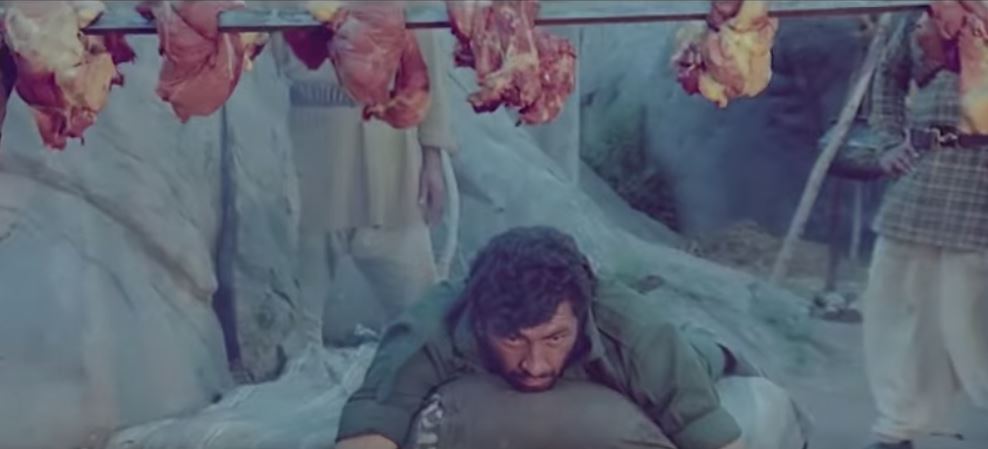
Box office rank that year: 1.
The money was spent on
i) A huge starcast of then current superstars (Waqt had five major stars, none was a superstar; Sholay featured the highest and second highest paid [no. 1 by the time the film was released] male stars of the day, the highest paid female star, the no.1 male and female leading actors in the opinion of critics and in terms of awards, B list leading men like Sachin in minor roles…The actor whom the film revolved around and who propelled the film to historic success was a newcomer who would not have cost much, though after Sholay he became India’s highest paid villain.
ii) 70mm and stereophonic sound (initially for four prints)
iii) The highest paid screenwriters in Indian film history
iv) Recreating a village and a dacoits’ den in rocky territory in Karnataka
v) Epic length (3 hours and 19 minutes; an eight minutes longer version—207? minutes—is available on DVD)
1981
Kranti
Box office rank that year: 2.
The money was spent on 70mm (some prints), epic length, sets (including an 1800s- style ship), a very big cast, the highest paid screenwriters…
Three hours and six minutes/ 186 mts
1993
Roop Ki Rani Choron Ka Raja
Box office rank that year: 14.
The money was spent on ??? The film’s budgetwas supposed to have crossed the Rs 10 crore mark.
2003
Koi Mil Gaya
Box office rank that year: 1.
The money was spent on special effects to rival Spielberg’s E.T. (and ‘inspired by’ E.T.) The film’s publicity did not make a song and dance about the budget because the hero and director were in-house.
LOC Kargil
Box office rank that year: 7, which was very poor considering that with a better script this could have been an all-time blockbuster, much bigger than the same director’s mega-hit Border.
The money was spent on a cast that was even more humungous, but slightly better utilised, than Mera Naam Joker’s. The Indian Army helped out with spectacular locations and props which, if paid for, would have made this 247 minute film (the 3rd longest in Hindi-Urdu film history to date) India’s most expensive ever.
2006
Krrish
Box office rank that year: 2.
The money was spent on special effects: original ideas this time. Though done by Australian experts, their imaginativeness put India behind only Hollywood.
After 2010
Ruchi Kaushal, The Times of India
2010
Robot/ Endhiran : Rajinikanth’s name is sufficient to make a film grand. The actor turned robot at an eye-popping cost of about Rs 150 crore. Featuring Aishwarya Rai as the female lead, the film had everything, from robotic lions, several kinds of Rajinikanth robots, huge sets, to anti-gravity stunts. It was the first Indian film to have a Legacy Effects studio which enabled them to get prosthetic make-up and animatronics. Talking about costumes, 57 dresses were prepared for Aishwarya whereas suits for Rajinikanth’s robotic version, Chitti, were made from copper.
Box office rank that year: no.1 in India as a whole, in all languages put together; its Hindi-Urdu version made just under Rs.20 crore, a record for a dubbed film, which remained unbroken till 2015.
The money was spent on special effects of a kind never seen in India before. Rajinikanth, as Ruchi Kaushal hints, would have been the single biggest expense, perhaps a third of the film’s budget.
2011
Ra.One (2011): Shah Rukh Khan’s sci-fi film Ra.One was a first of its kind film made in Bollywood. With a budget of around Rs 125 crore, Ra.One realised SRK’s childhood dream of becoming a superhero. Apart from the costly VFX, what came as the second biggest expense was the costume. While Khan’s latex costume ranged around Rs 1 crore, Arjun Rampal’s red suit was made of 3-inch thick solid rubber. Both had micro-computer circuitry too which made the things very difficult for the actors wearing them.
Box office rank that year: According to BoxOfficeIndia.com it was no.6; this unwatchable film was not among the Top 25 earners ranked by IbosNetwork.com. BoxOfficeIndia obviously included merchandising, and satellite and other rights that had been sold before the film’s release.
The money was spent on VFX special effects.
2013
Dhoom 3 (2013) was India’s first film to be released in Imax.
The Dhoom series is known for its big stars, hot bombshells, expensive bikes and never seen before chase scenes. And every sequel gets bigger and better with more and more money going in the project. The third film in the series, Dhoom 3, boasted of one of the most expensive songs – ‘Malang’ - ever made in Bollywood, which cost the makers a whopping Rs 5 crore.
Box office rank that year: 1. For a while it was the biggest hit in Indian film history (not accounting for inflation).
The money was spent on the things listed by Ruchi Kaushal above and some ‘prints’ in Imax.
Krrish 3 (2013): Hrithik Roshan gave India its own superhero Krrish, but everything comes at a cost. Directed by Rakesh Roshan, Krrish 3 cost the father-son duo a whopping Rs 115 crore. But they managed to earn the amount back along with heavy profits. It is said the Shah Rukh Khan’s Red Chillies VFX took care of the special effects of the film, which were revised a few dozen times before inclusion at a cost of about Rs 26 crore. Not to forget Kangana’s latex rubber costume worth around Rs 10 lakh each, and Vivek Oberoi’s metal suit weighing 28 kg, the film had too many things to boast of.
Box office rank that year: 3.
The money was spent on the things listed by Ruchi Kaushal above.
2014
Bang Bang (2014):
It took Rs 140 crore to remake the Tom Cruise and Cameron Diaz-starrer film Knight and Day. As two of the highest paid Bollywood actors, Hrithik Roshan and Katrina Kaif, united for the action-packed flick, things were expected to be huge in every way. The filmmakers roped in Andy Armstrong (Hollywood action director who has worked on The Amazing Spiderman 2) to deliver the breathtaking and death defying stunts. Also, the action sequences involved Hrithik driving an F1 car, water-skiing while being tied to a sea-plane and doing the fly board stunts. As if this was not enough to make it grand, the film was widely shot at locations in Prague, US, Thailand and Greece.
Box office rank that year: ?. (In terms of return on investment it was no.11)
The money was spent on IMAX prints and the things listed by Ruchi Kaushal above.
2015
Bahubali (part 1 in 2015; part 2 in 2017) was made on a whopping budget of Rs 250 crore [for both parts put together].
Featuring never seen before gravity defying stunts shot in a grand manner, huge sets and beautiful cinematography, Bahubali:_The_Beginning_(2015) is all that we need for a mega entertaining experience. From bringing about 1000 horses from Rajasthan for shooting, to building swords, armour, jewellery from scratch, the film has all elements to boast about, including a very expensive romantic song sequence which will not be shown on social media or television. The SS Rajmouli directed film has released in three languages including Hindi, Tamil and Telugu??? and is backed by Karan Johar. Box office rank that year: no.2 in India; no.1 in Telugu history.
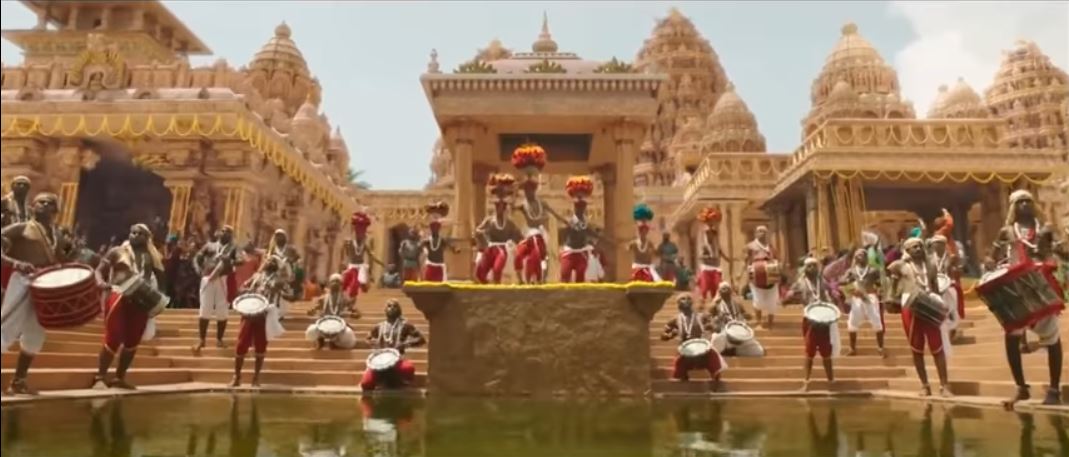
The no. 3 hit in Indian film history till 2015.
The money was spent on the most lavish sets and imaginative special effects in Indian history.
2016
2016 was the year of the small and medium budget film. Five of the seven most profitable films of the year were made on budgets of between Rs21 crore and Rs.40 crore.
Dangal, which created domestic box history, and Sultan, which was the year’s second highest grosser, were made on budgets of Rs.90 crore each, which is not as high as would be expected from Filmistan’s two top stars, Amir Khan and Salman Khan.
Mohenjo Daro and Shivaay, which had budgets of around Rs115 crore each, were both flops. (Source of budgets: Super Cinema )
According to Super Cinema Mohenjo Daro lost Rs60 crore and Shivaay Rs30 crore. (For details, and photographs, see Hindi-Urdu films: 2016.)
The city of Mohenjo Daro was recreated in great detail for the eponymous film. This cost money, as did some VFX.
Shivaay spent its budget on spectacular mountainscapes and on VFX, both in the mountains and in Bulgaria.
Box office rank that year
Shivaay (2h 49min) no.8
Mohenjo Daro (2h 35min) no.18
2017
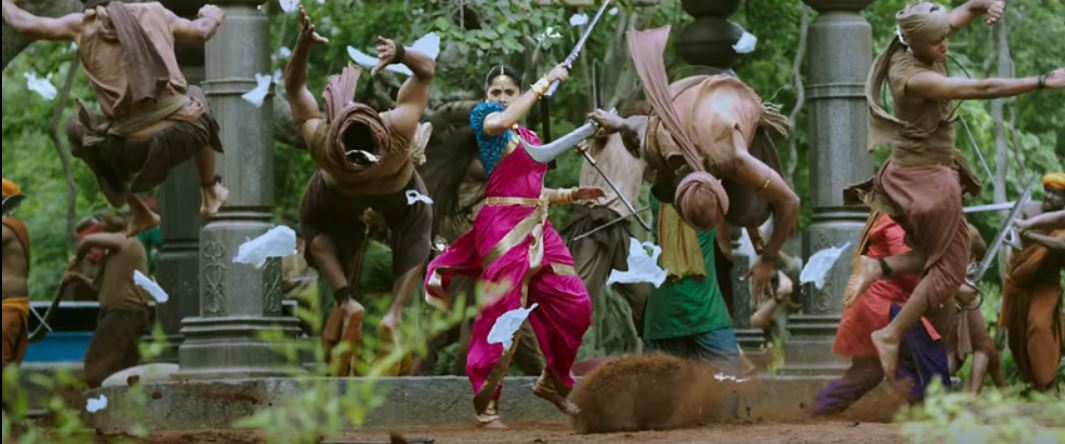
Scenes like this one, in which Anushka Shetty singe-handedly tosses several enemy soldiers into the air, drove up the film’s costs.
About the 2-part Bãhubali saga Forbes wrote in April 2017, ‘Both films were shot back-to-back for around $40m.’
The US dollar hovered around Rs.67 during this period. By the time Bahubali 2: The Conclusion (2017) was released the rupee had strengthened to Rs64.40 to the dollar. So, we are looking at a figure of between Rs.258 crore and Rs.268 crore. Together the 2-part Bãhubali saga is without doubt by far India's most expensive feature film ever. But if we divide the Forbes figure by two, then each part cost less that Bang Bang! did.
All the same, viewers of the Bãhubali films were looking at India’s biggest spectacle till then. The stunning kingdom of Mahishmati was common to both parts, as were many palace interiors. This effected economies of scale. But part 2 also had Devasena’s exquisite marble palace thrown in as an added attraction.
India Today had a different take. It wrote, ‘When it finally hits screens on April 28, Arka Mediaworks would have spent Rs 450 crore—Rs. 300 crore more than the earlier estimated budget for the two films.’
Bahubali 2: The Conclusion (2017) was India’s 3rd IMAX film and was released on 66 screens—India’s biggest IMAX release till then.
2hr48m (168 minutes)
See also
Box office records of Hindi-Urdu films
Records for the 1930s are non-existent but you may still want to see
Hindi-Urdu films: 1931 <> Hindi-Urdu films: 1932 <> Hindi-Urdu films: 1938 <> Hindi-Urdu films: 1939 <>
The highest grossing films of Individual years (and some decades) are listed at:
Hindi-Urdu films: 1940 <> Hindi-Urdu films: 1941 <> Hindi-Urdu films: 1942 <> Hindi-Urdu films: 1943 <> Hindi-Urdu films: 1944 <> Hindi-Urdu films: 1945 <> Hindi-Urdu films: 1946 <> Hindi-Urdu films: 1947 <> Hindi-Urdu films: 1948 <> Hindi-Urdu films: 1949 <> The Hits of the 1940s<> Hindi-Urdu films: 1950 <> Hindi-Urdu films: 1951 <> Hindi-Urdu films: 1952 <> Hindi-Urdu films: 1953 <> Hindi-Urdu films: 1954 <> Hindi-Urdu films: 1955 <> Hindi-Urdu films: 1956 <> Hindi-Urdu films: 1957 <> Hindi-Urdu films: 1958 <> Hindi-Urdu films: 1959 <> The Hits of the 1950s<> Hindi-Urdu films: 1960 <> Hindi-Urdu films: 1961 <> Hindi-Urdu films: 1962 <> Hindi-Urdu films: 1963 <> Hindi-Urdu films: 1964 <> Hindi-Urdu films: 1965 <> Hindi-Urdu films: 1966 <> Hindi-Urdu films: 1967 <> Hindi-Urdu films: 1968 <> Hindi-Urdu films: 1969 <> Hindi-Urdu films: 1970 <> Hindi-Urdu films: 1971 <> Hindi-Urdu films: 1972 <> Hindi-Urdu films: 1973 <> Hindi-Urdu films: 1974 <> Hindi-Urdu films: 1975 <> Hindi-Urdu films: 1976 <> Hindi-Urdu films: 1977 <> Hindi-Urdu films: 1978 <> Hindi-Urdu films: 1979 <> Hindi-Urdu films: 1980 <> Hindi-Urdu films: 1981 <> Hindi-Urdu films: 1982 <> Hindi-Urdu films: 1983 <> Hindi-Urdu films: 1984 <> Hindi-Urdu films: 1985 <> Hindi-Urdu films: 1986 <> Hindi-Urdu films: 1987 <> Hindi-Urdu films: 1988 <> Hindi-Urdu films: 1989 <> Hindi-Urdu cinema: 1980-89 <> Hindi-Urdu films: 1990 <> Hindi-Urdu films: 1991 <> Hindi-Urdu films: 1992 <> Hindi-Urdu films: 1993 <> Hindi-Urdu films: 1994 <> Hindi-Urdu films: 1995 <> Hindi-Urdu films: 1996 <> Hindi-Urdu films: 1997 <> Hindi-Urdu films: 1998 <> Hindi-Urdu films: 1999 <> The Hits of the 1990s<> Hindi-Urdu films: 2000 <> Hindi-Urdu films: 2001 <> Hindi-Urdu films: 2002 <> Hindi-Urdu films: 2003 <> Hindi-Urdu films: 2004 <> Hindi-Urdu films: 2005 <> Hindi-Urdu films: 2006 <> Hindi-Urdu films: 2007 <> Hindi-Urdu films: 2008 <> Hindi-Urdu films: 2009 <> Hindi-Urdu films: 2010 <> Hindi-Urdu films: 2011 <> Hindi-Urdu films: 2012 <> Hindi-Urdu films: 2013 <> Hindi-Urdu films: 2014 <> Hindi-Urdu films: 2015 <> Hindi-Urdu films: 2016 <>
And also
Box office records of Malayalam films 1980-2016, quite detailed
There are less detailed but evolving pages dedicated to
